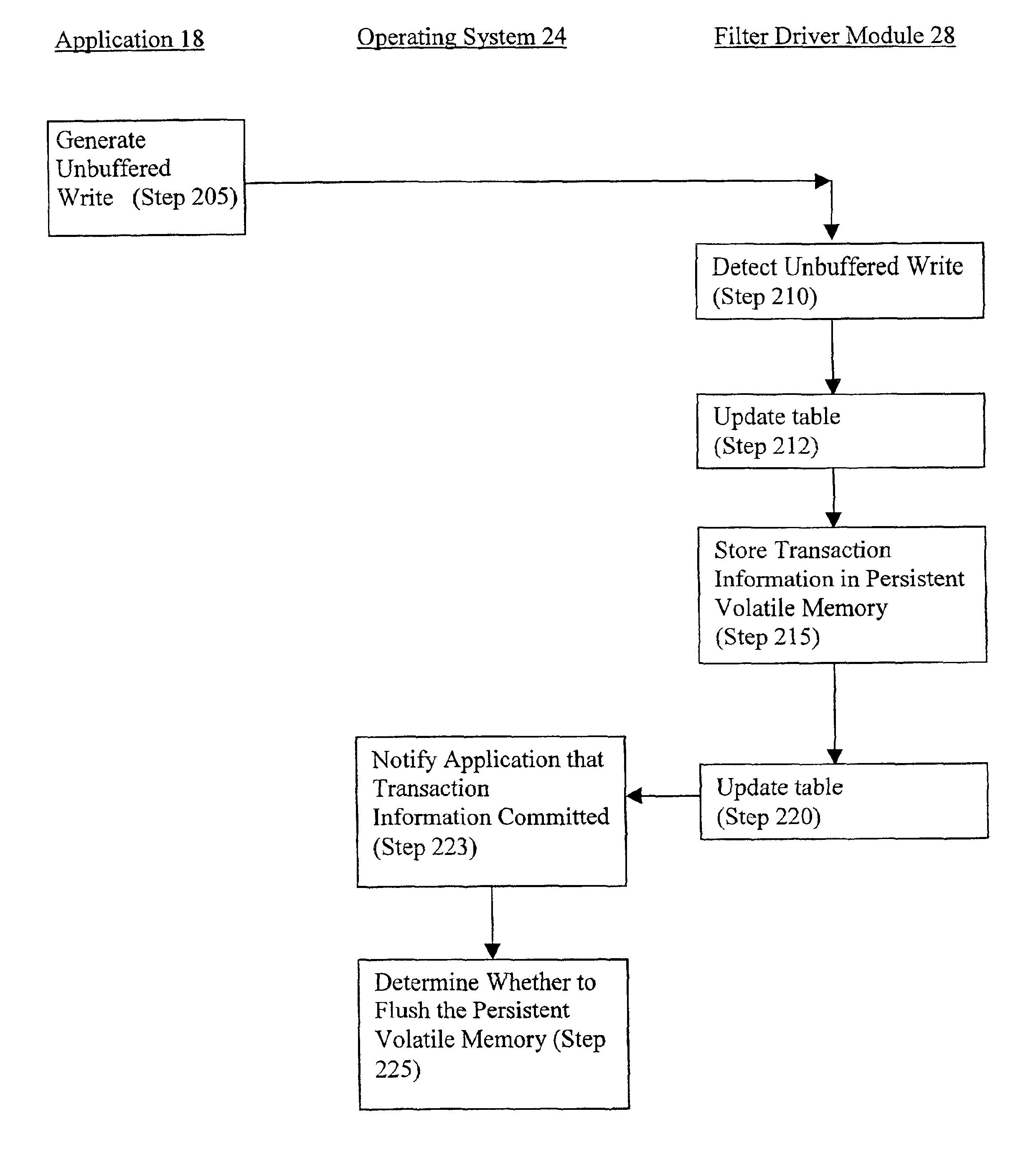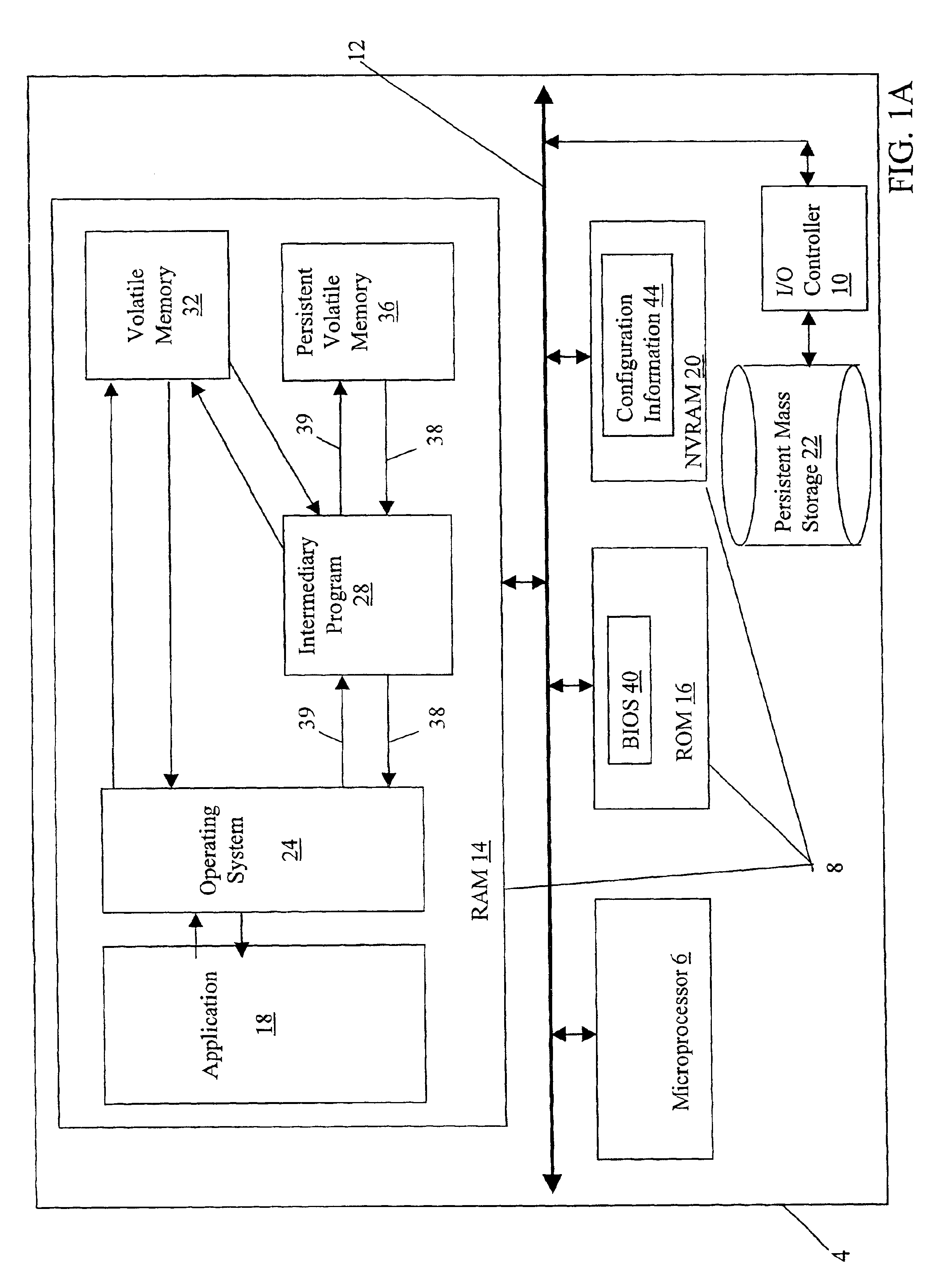Method and apparatus for storing transactional information in persistent memory
- Summary
- Abstract
- Description
- Claims
- Application Information
AI Technical Summary
Benefits of technology
Problems solved by technology
Method used
Image
Examples
Embodiment Construction
[0020]Referring to FIG. 1A, an embodiment of a computer 4 constructed in accordance with the invention is depicted. The computer 4 can be any personal computer (e.g., 286, 386, 486, Pentium, Pentium II, Macintosh computer), Windows™-based terminal (developed by Microsoft Corporation of Redmond, Wash.), Network Computer, wireless device, information appliance, RISC Power PC, X-device, workstation, mini computer, main frame computer, personal digital assistant, or other computing device that has a Windows™-based desktop and sufficient persistent mass storage.
[0021]The computer 4 includes a microprocessor 6, a memory 8 for storing programs and / or data, an input / output (I / O) controller 10, and a communications bus 12 allowing communication among these components. In one embodiment, the microprocessor 6 is a Pentium Classic / MMX CPU, developed by Intel Corporation of Austin, Tex., an AMD-K6 CPU, developed by AMD of Sunnyvale, Calif., and the like.
[0022]The computer 4 (i.e., the I / O contro...
PUM
 Login to View More
Login to View More Abstract
Description
Claims
Application Information
 Login to View More
Login to View More - R&D
- Intellectual Property
- Life Sciences
- Materials
- Tech Scout
- Unparalleled Data Quality
- Higher Quality Content
- 60% Fewer Hallucinations
Browse by: Latest US Patents, China's latest patents, Technical Efficacy Thesaurus, Application Domain, Technology Topic, Popular Technical Reports.
© 2025 PatSnap. All rights reserved.Legal|Privacy policy|Modern Slavery Act Transparency Statement|Sitemap|About US| Contact US: help@patsnap.com



